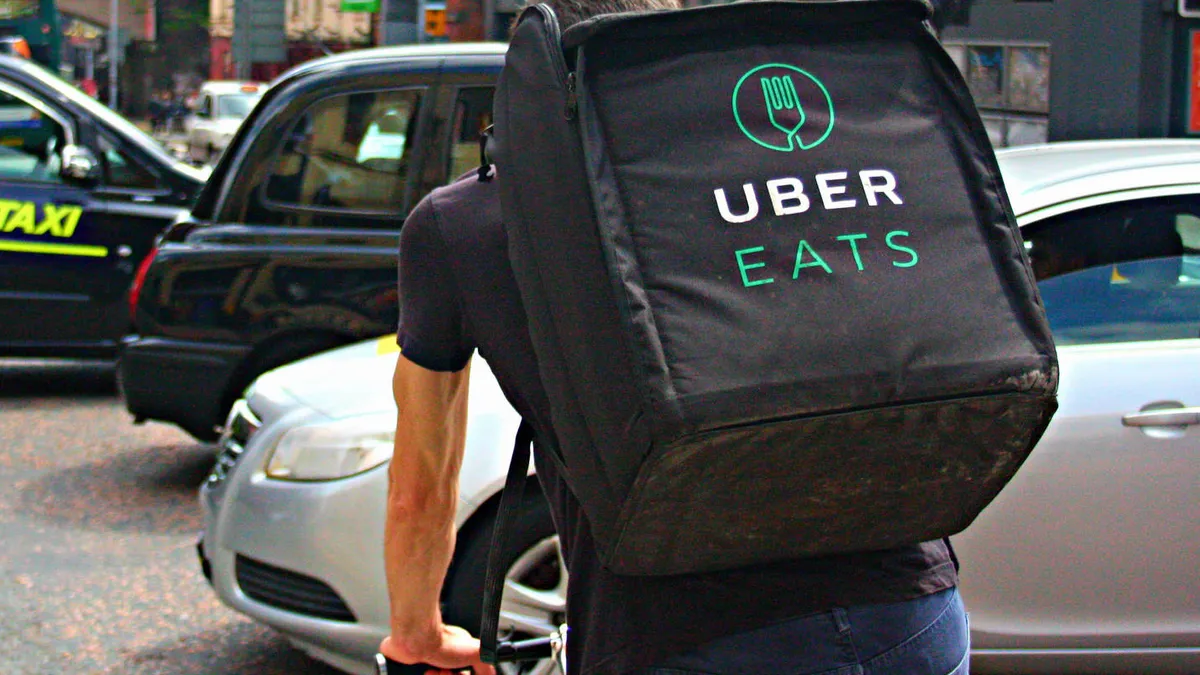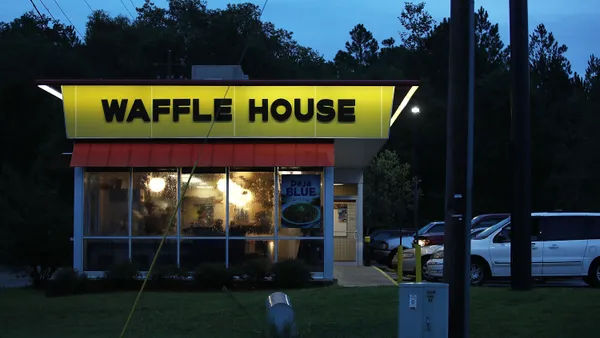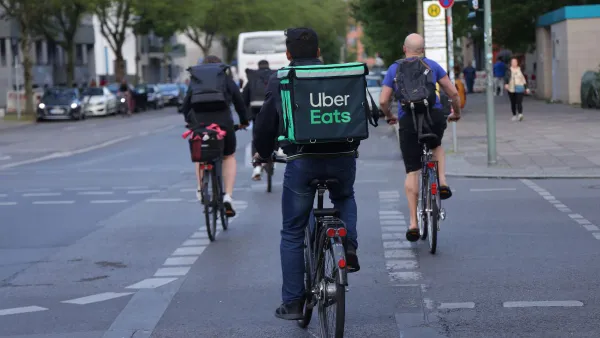Dive Brief:
- Uber has launched a rewards program — Uber Rewards — that's applicable to customers who use Uber’s ride-hailing services, as well as its food delivery service, according to a company release. The program has been tested in eight cities and on Wednesday rolled out to an additional nine locations.
- The loyalty program is free to join and tiered, with escalating benefits based on frequency of use. Users can sign up for free, and the program also features a cash-reward component, which gives users discounts when they add funds to their account upfront "for a seamless payment experience across Uber's services," according to an Uber blog post. Uber Cash can be put toward both ride-hailing and Uber Eats.
- This announcement comes on the heels of Lyft's similar rewards program launch on Monday.
Dive Insight:
Although the big narrative from Uber’s rewards launch is how it will compare to Lyft , which also just added a rewards program, it’s worth noting how the feature could boost Uber Eats’ presence in a crowded food delivery space. By offering a tiered rewards program, Uber Eats can better incentivize hungry customers to keep the third-party delivery service top of mind even if they’re just hailing a ride.
It can also help Uber — which is the fastest-growing company in the delivery space — to continue to gain ground on Grubhub, which offers Grubhub for Work rewards but nothing similar for individual customers.
Uber Eats’ other main competitors DoorDash and Postmates both recently introduced programs that waive delivery fees for a $9.99-per-month subscription fee. Conversely, Uber’s program is free, which gives the company a clear leg up on the competition in an increasingly busy and high-demand space.
Uber Cash is perhaps the most applicable benefit for the food delivery component of the program — allowing users to spend their earned credits ($5 for every 500 points accrued) on either rides or Uber Eats deliveries. Also, as part of the tiered program, customers who achieve diamond status have their delivery fee waived every six months on Uber Eats orders.
The loyalty program is similar to how traditional airline rewards programs work, which should help with adoption, as consumers are already familiar with the process. It’s also worth noting that the program will “eventually” apply to electric bike rides, according to Bloomberg, which could mean it will eventually apply to any and all future food delivery iterations. In October, the Wall Street Journal reported that Uber plans to launch food delivery via drone by 2021. As Uber continues to grow its services beyond ride-hailing — Uber Eats plans to cover 70% of U.S. suburbs by the end of the year — these rewards will become much more valuable.
However, whether or not the incentive will be enough to move the needle on consumer habits is yet to be seen. A recent study shows that most U.S. consumers order delivery through restaurant brands, not third-party apps. Consumers may continue to order based on their specific craving versus saving a couple of bucks here and there from a delivery service.













